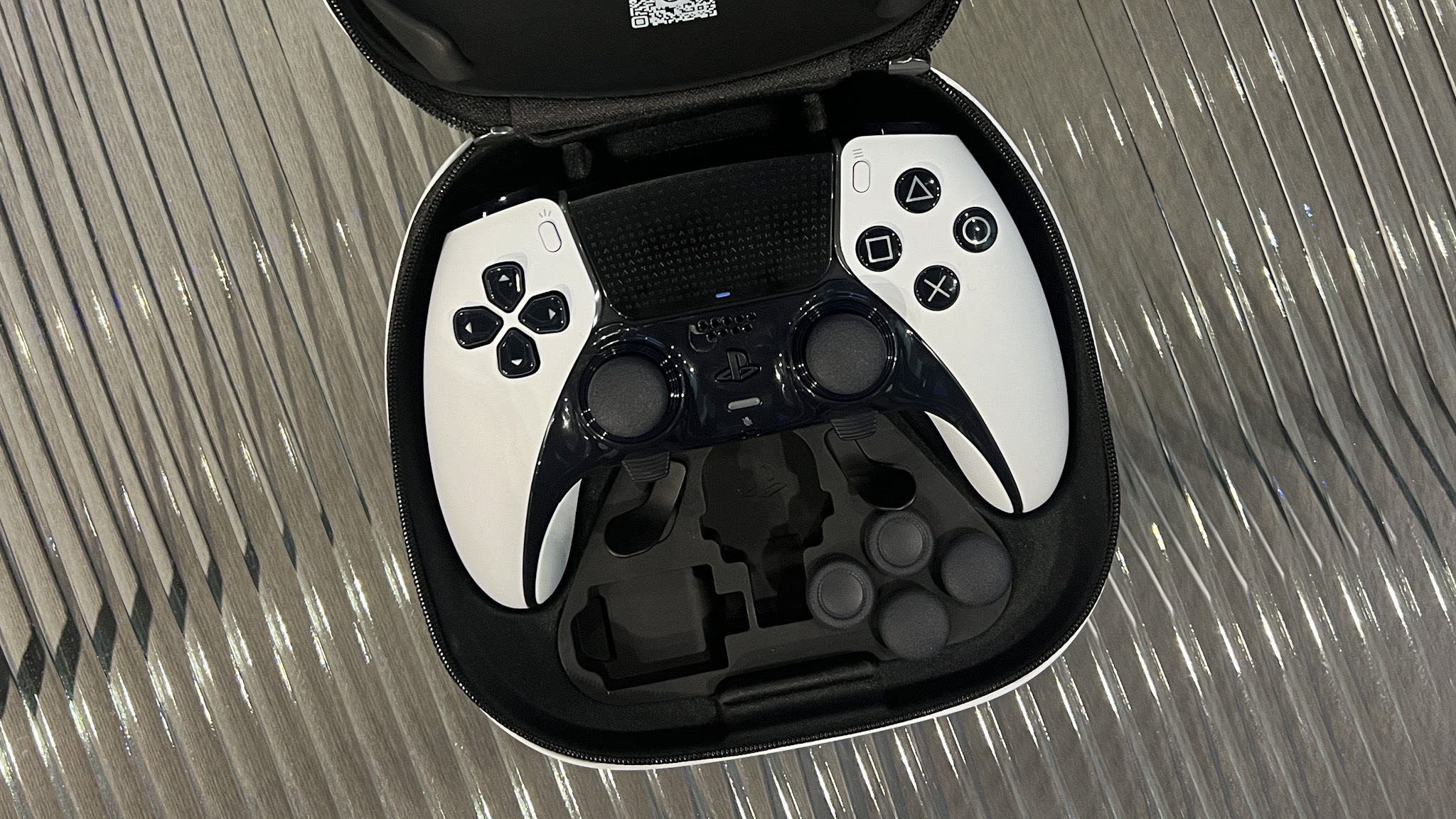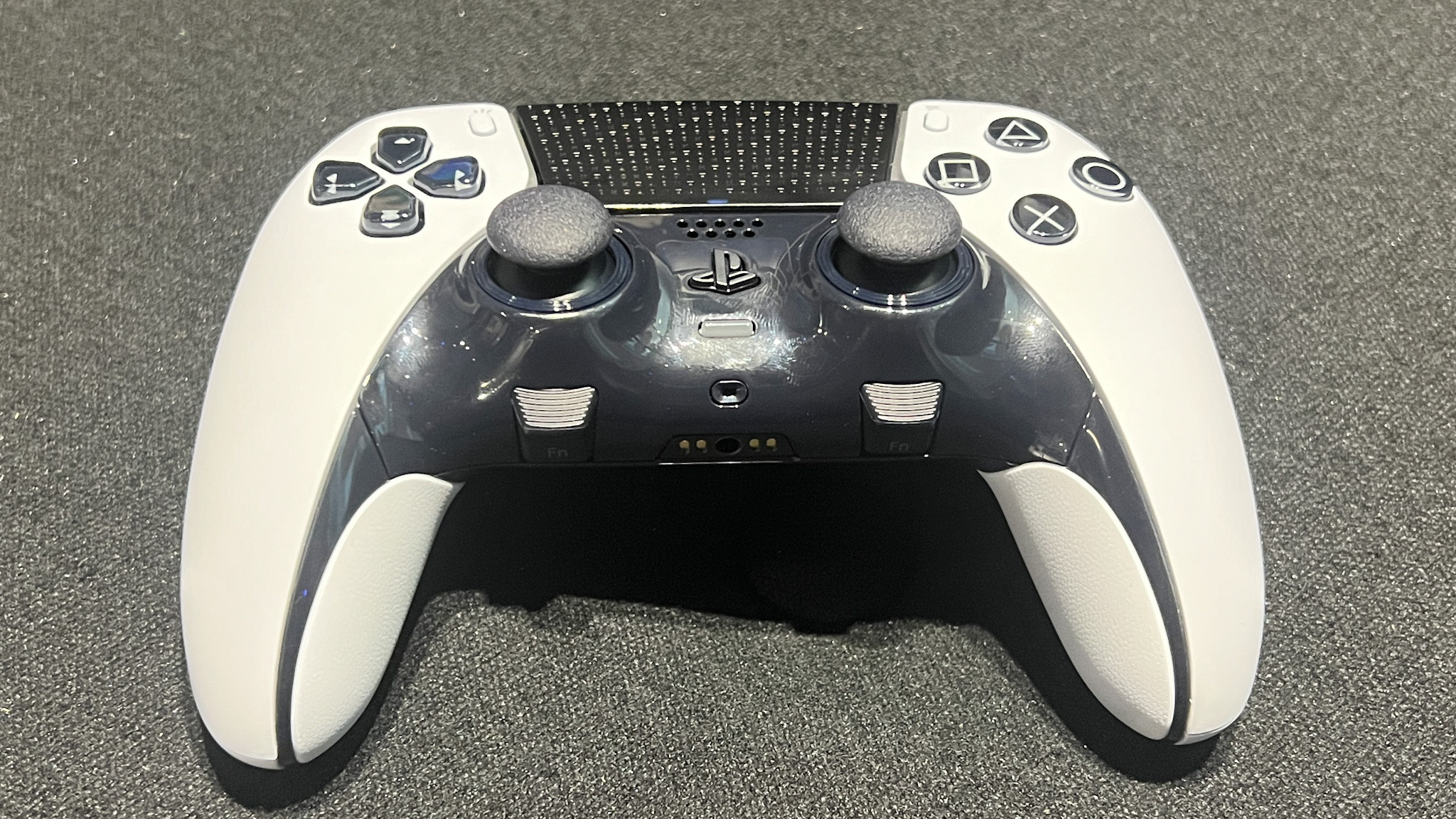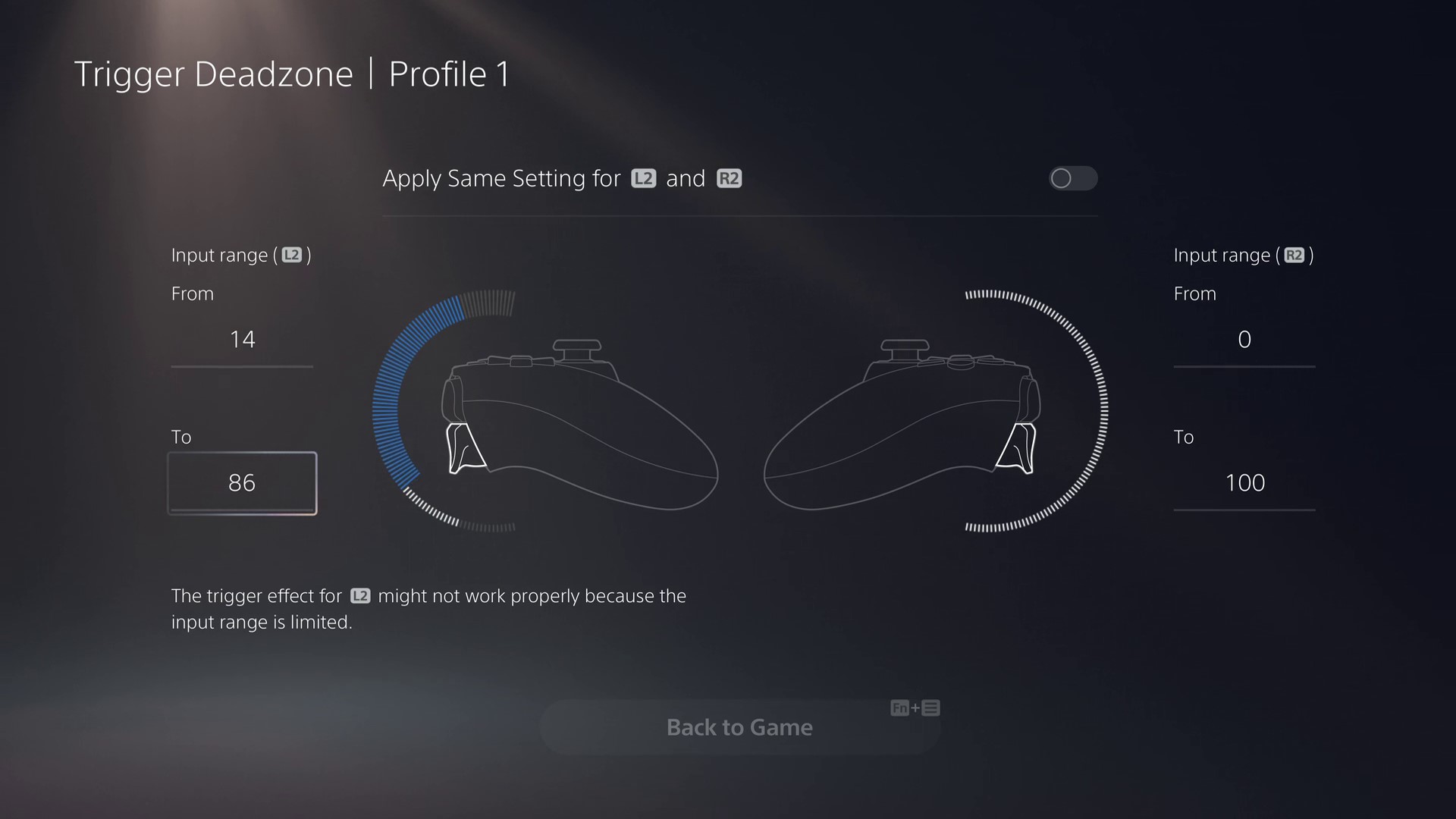DualSense Edge hands on: "Sony's caught up"
Satisfying hardware shines with comprehensive software in Sony's first pro controller

PlayStation has never released a pro controller before. That means there's a lot resting on the adaptive shoulders of the DualSense Edge, due for release January 23 (or January 26 if you're in the UK), 2023. I recently had the chance to wrap my grubby mitts around this new release, and it's safe to say Sony's caught up.
The DualSense Edge looks remarkably similar to the original controller, retaining the same ergonomic form factor and weighty feel in the hand. That's excellent news; the DualSense is the best PS5 controller on the market right now and the Edge isn't interested in losing that title any time soon. On top of that classic design, though, you've got a glossy mid-section and additional texture on the R2 and L2 triggers. The former is less welcome than the latter, with the shiny surface already seeing some serious fingerprint action in our time with the controller - it's certainly going to be difficult keeping this box-fresh after a few sessions. However, we were assured that different finishes will be available, hopefully with some matte options among them.

Everything ships in a sturdy carry case which feels particularly premium in the hand. Sticking with that PlayStation 5 aesthetic, this crisp white dome houses our DualSense Edge controller, all the thumbstick and paddle accoutrements, and the included USB connecter in the main base. You'll also find a mesh pocket for cables and a removable panel should you wish you charge your controller while it remains propped up in the case itself.
Looks aren't everything
The look and feel of the DualSense Edge isn't the reason pro players will be shelling out $200 though. The additional customization options here are the driving force behind the gamepad, offering control over acceleration and deadzone of each thumbstick, three tiers of trigger height, and full button remapping. In the box, you'll also find six thumbstick topper options, two back paddles, two what-can-only-be-called back button nubbins, and a USB connector lock that ensures your cable never falls out. That's a solid selection of personalization options, and they're all smooth and easy to set up too.
I was swapping thumbsticks and resetting trigger actuation points in between God of War: Ragnarok boss level phases without even hitting pause, diving straight back into the action with a completely different feel. On first inspection, I was wary of the smaller oval shaped back buttons available alongside the more traditional paddle options. The clickers jut directly away from the body of the controller, offering a small oval shape to nestle directly underneath the fingertips. It's not a set of buttons I've used before, and I was expecting them to be too fiddly to be helpful during the heat of battle. However, being able to just nudge a clicker back rather than fully pressing a paddle was excellent for Call of Duty reloads and God of War dodges alike.

The process of removing a thumbstick is snappy and easy; simply lift a small lever inside the thumbstick housing (popping off the faceplate first), and slide the component out. At least at launch, there won't be additional thumbstick designs available to buy, offering different stem heights or tension adjustment options. That's a little disappointing, considering just how much attention has been paid to this swapping process. Instead, this is simply for replacement should your stick start to drift. Sony is offering the option to buy extras rather than adding Hall sensors to its kit, which is a little frustrating.

Changing the trigger actuation points may kill the adaptive trigger feedback, but it's particularly satisfying sliding a physical clicker down to one of three positions to set your trigger height. This can very much be an on-the-fly adjustment, and one I was able to set within a few moments during my time in God of War Ragnarok. For example, I enjoyed the feeling of tension under my finger while exploring the wilds and taking in the landscape, but I'd quickly switch to a tighter response when an axe throw was required.
Weekly digests, tales from the communities you love, and more

So far, the DualSense Edge is sticking to the playbook of a typical pro controller, but rest assured, Sony has taken things further. Under each thumbstick you'll find a small textured lever. These are function buttons that open up a whole new world of controls similar to the ones you'd find on a keyboard. Clicking down one of the buttons allows you to access volume controls and quickly swap between your presets (or jump into the preset customization panel). At the moment, these buttons are a little under-used, it would have been great to see them offering additional macro controls, for example, but there's plenty of opportunity for them to take on more of a role further down the line. It takes a little unlearning to truly wield these function buttons like a pro, I was still looking down to the controller before actually moving below the thumbstick even by the end of my time with the DualSense Edge, but their grippy texture and tactile feel significantly eases this muscle memory rewiring.
Under the hood
Physical customizations make up a large part of the DualSense Edge, but it's the software that ties it all together. PlayStation adds a whole new screen for its Edge controller settings, offering an in-depth personalization menu across thumbstick sensitivity and deadzone, trigger deadzone, button assignments, trigger effect intensity, and vibration intensity. Navigating the menu is simple, starting with the Custom Profiles screen and moving to each of the above options once a preset has been created.

It's the thumbstick options that stuck out for me the most. Stick sensitivity is determined from a list of pre-assigned options, ranging from the immediate 'Digital' to the more sluggish 'Steady'. Beyond this selection, though, you're free to tweak the curve of that graph for each stick however you like, creating a truly personalized feel in just a few tweaks. I was also impressed by the onscreen representation of your changes, with white and blue dots clearly displaying the difference between your actual thumbstick movement and the adjusted movement you've created. Kicking the deadzone around is also as simple as moving a slider across the screen.

The trigger deadzone is represented in a particularly satisfying manner, too. As you adjust your input range, you'll see your actuation range light up in a blue crescent around the trigger. It's a visual display that I haven't used before when tinkering with similar settings, and it makes the world of difference when trying to quickly nail a control scheme first time.

The button assignment menu is as one would expect, though requires the user to scroll through a list of button options when reassigning rather than being able to simply hit the button you're looking to map to. That's a little strange considering the button remapping process generally follows the same steps; select the button you want to remap, press the button you want it mapped to. It's cumbersome to search for a button from a drop down menu when you have it sitting right in front of you.
Once you've set everything up, assign it to a function command (FN + circle, cross, or square) and you're good to go. You can store three presets on the controller itself or thirty on the console ready and waiting to be assigned.
Overall - DualSense Edge first impressions
The DualSense Edge feels like an excellent addition to PlayStation's portfolio. There's a stunning level of customization on offer here, with hardware and software working in tandem to create an effortlessly personalized experience no matter your preferences. That's something that can't be said for many gamepads - even those designed with similar intentions. In my short time with the controller, it was obvious that it will slot straight into more competitive players' arsenals and finally offer that fine-tuning so many PlayStation gamers have been begging for in the last few years.
At $199.99 / £209.99, this isn't going to be for everyone, but it's not been made for everyone. Considering the Scuf Reflex comes in at a similar price point (and higher if you're looking at the FPS model), takes aim at the same competitive market, and does it while offering fewer features, the DualSense Edge wears its official Sony stamp with great pride.
How we tested the DualSense Edge
I spent an hour getting a feel for the DualSense Edge in my hands on session. In that time, I used standard thumbstick tops, back paddle buttons mapped to dodge, triggers set to their shortest position, and 'Dynamic' thumbstick sensitivity for God of War Ragnarok. I then used taller domed thumbstick toppers, triggers set to default position, and 'Dynamic' thumbstick sensitivity for Gran Turismo 7 and shorter domed thumbsticks, triggers set to shortest position, circular back buttons mapped to reload and jump, and 'Precise' thumbstick sensitivity for Call of Duty Modern Warfare II.
We're rounding up all the best PS5 accessories in one place, and helping you stay on top of all the latest PS5 restocks as well. For more gamepads, we'd also recommend checking out all the best PC controllers up for grabs as well.

Managing Editor of Hardware at GamesRadar+, I originally landed in hardware at our sister site TechRadar before moving over to GamesRadar. In between, I've written for Tom’s Guide, Wireframe, The Indie Game Website and That Video Game Blog, covering everything from the PS5 launch to the Apple Pencil. Now, i'm focused on Nintendo Switch, gaming laptops (and the keyboards, headsets and mice that come with them), PS5, and trying to find the perfect projector.


